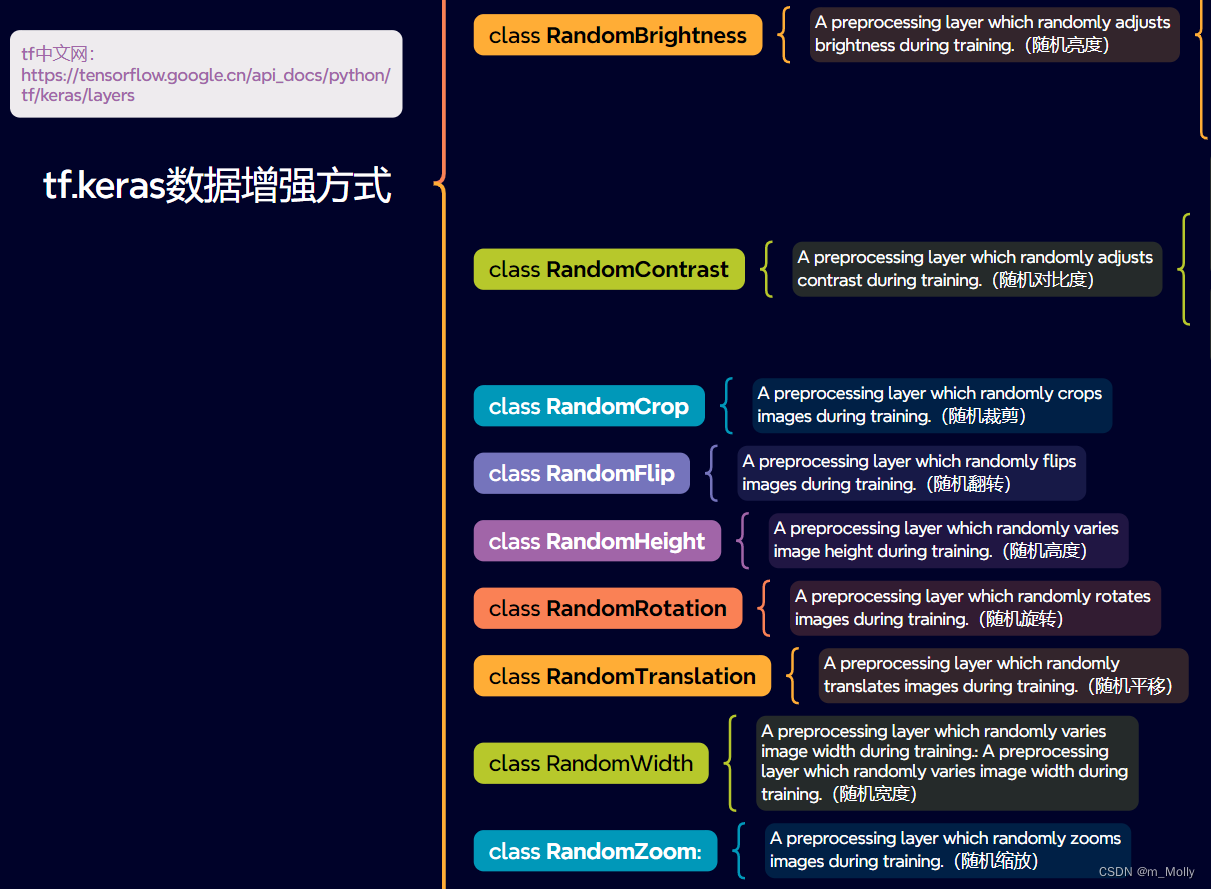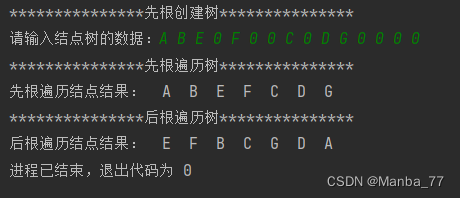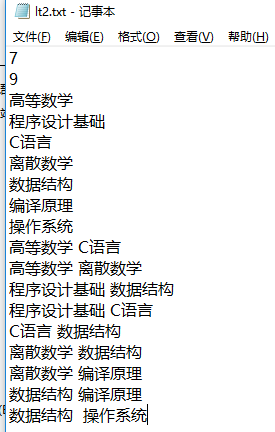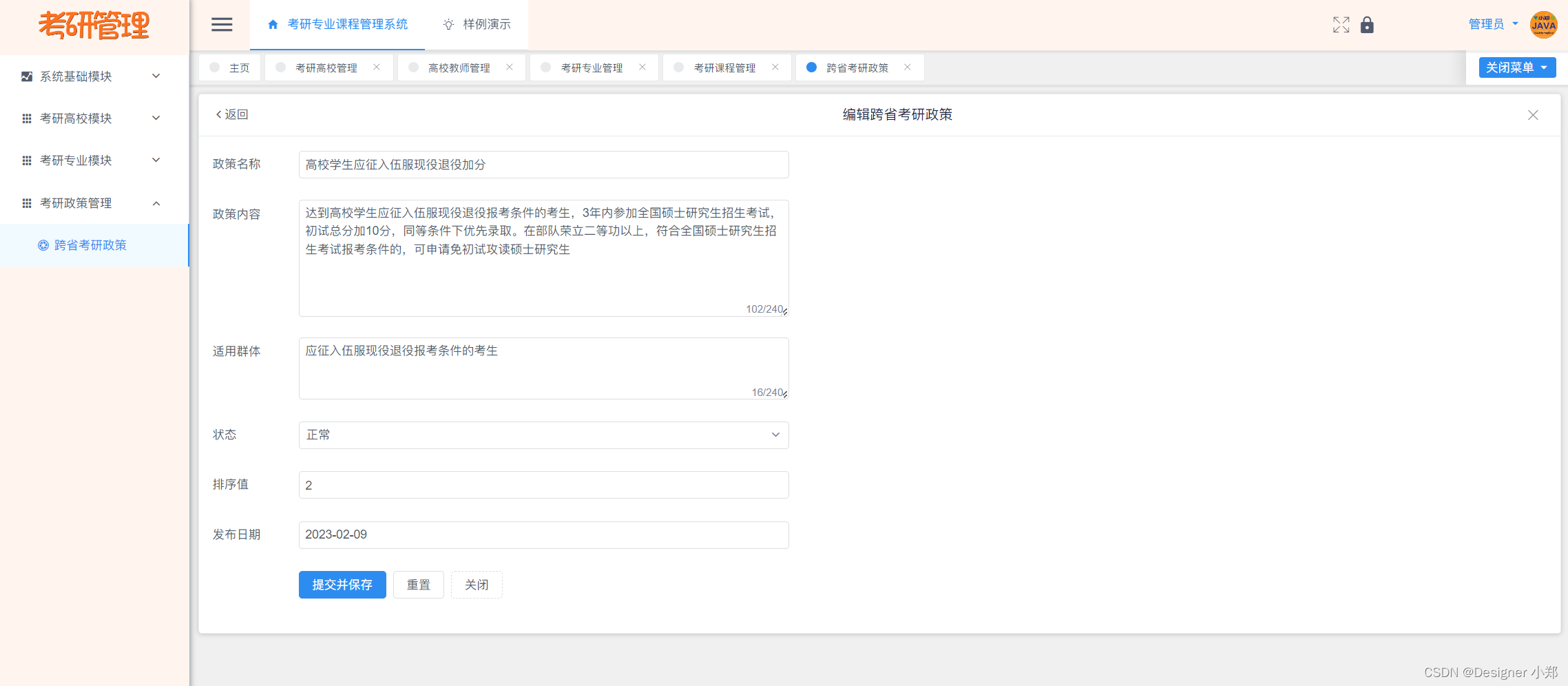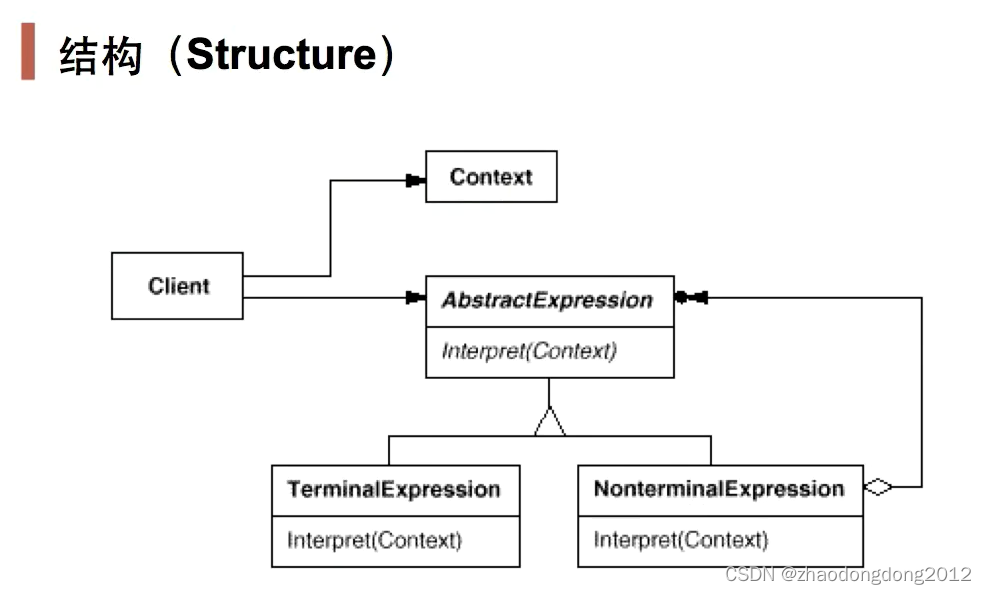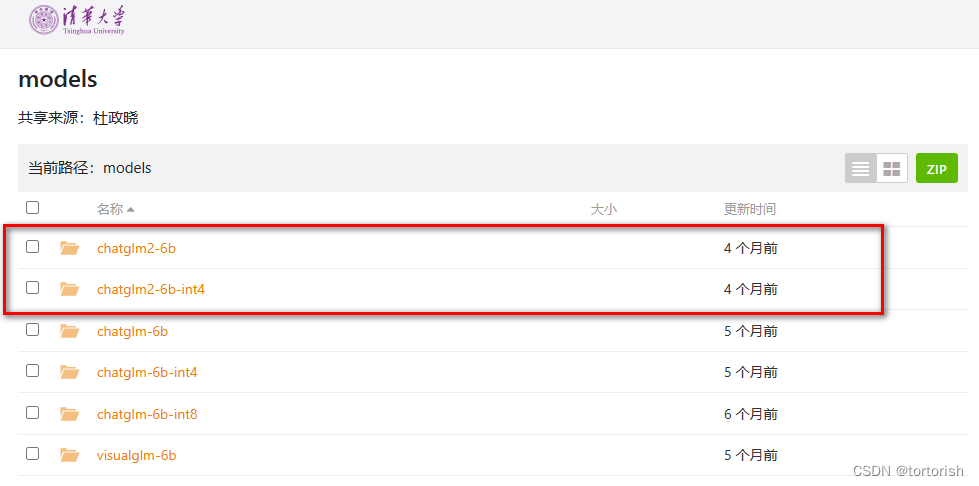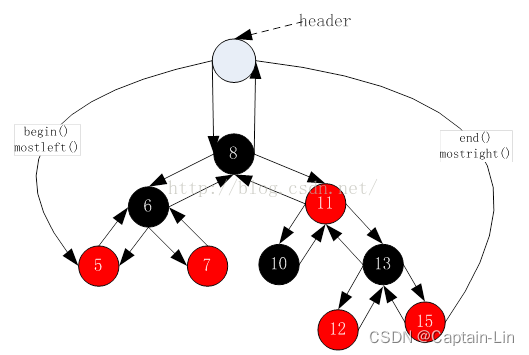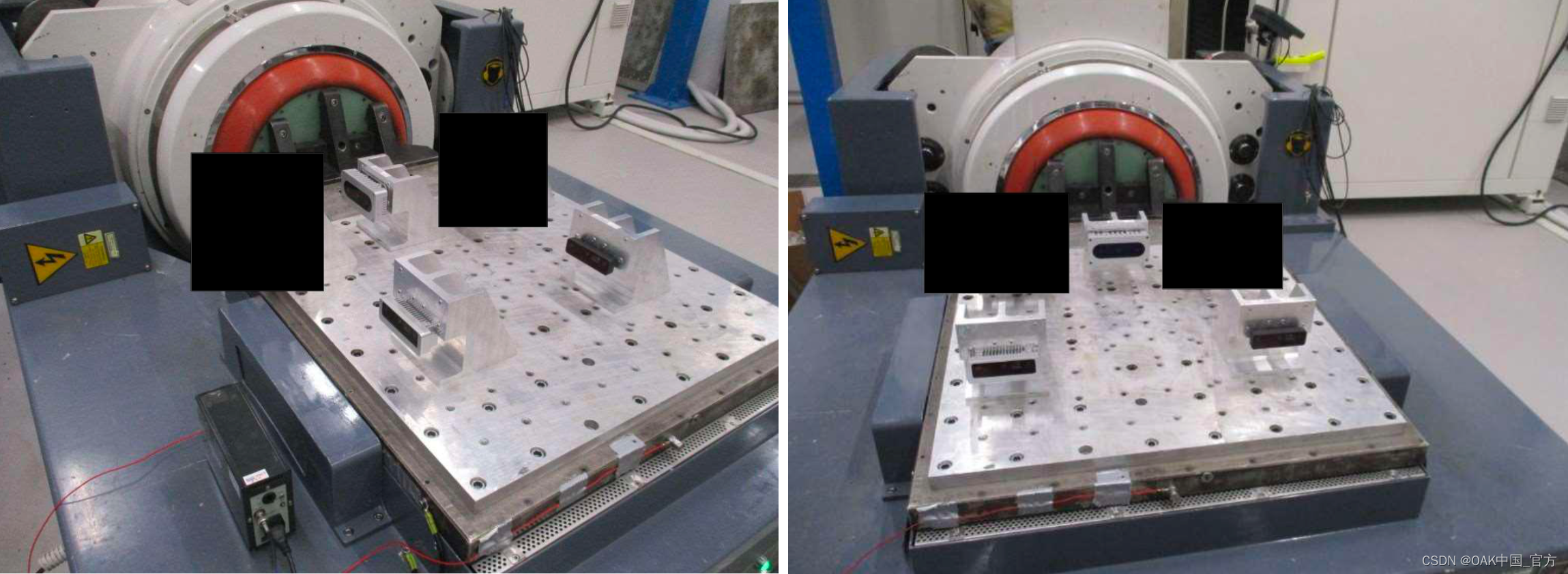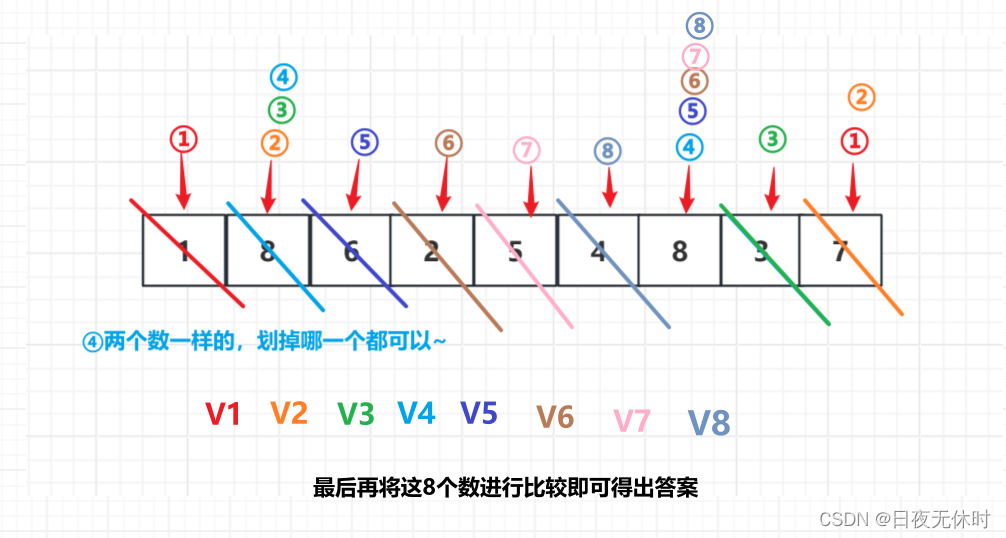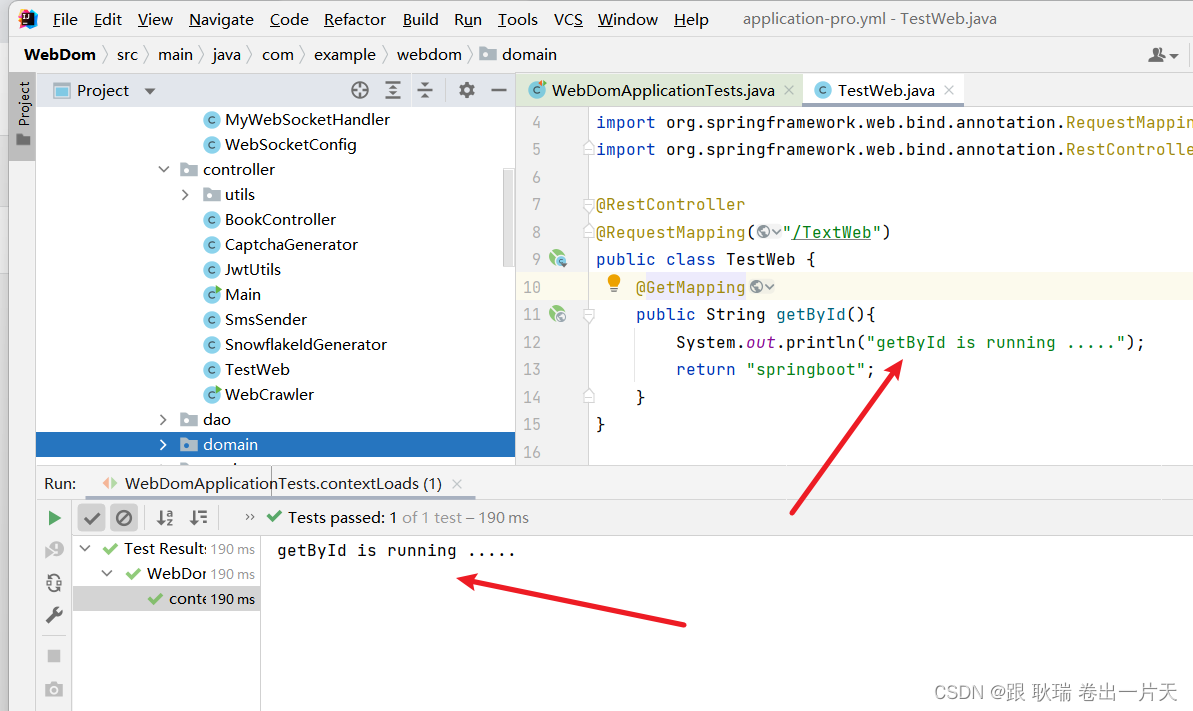文章目录
- 前言
- 什么是链表
- 链表的结构
- 带头和不带头的区别
- 链表的实现(方法)
- 遍历链表
- 头插法
- 尾插法
- 任意位置插入一个节点
- 链表中是否包含某个数字
- 删除链表某个节点
- 删除链表中所有关键字key
- 清空链表所有节点
- ArrayList 和 LinkedList的区别
- 总结
前言
什么是链表
含义:链表是一种物理存储结构上非连续存储结构,数据元素的逻辑顺序是通过链表中的引用链接次序实现的 。
图形解释:
逻辑上是连续的,但物理上看起来不连续
这个图形也叫单向不带头非循环

链表的结构
非常多样,有8种结构

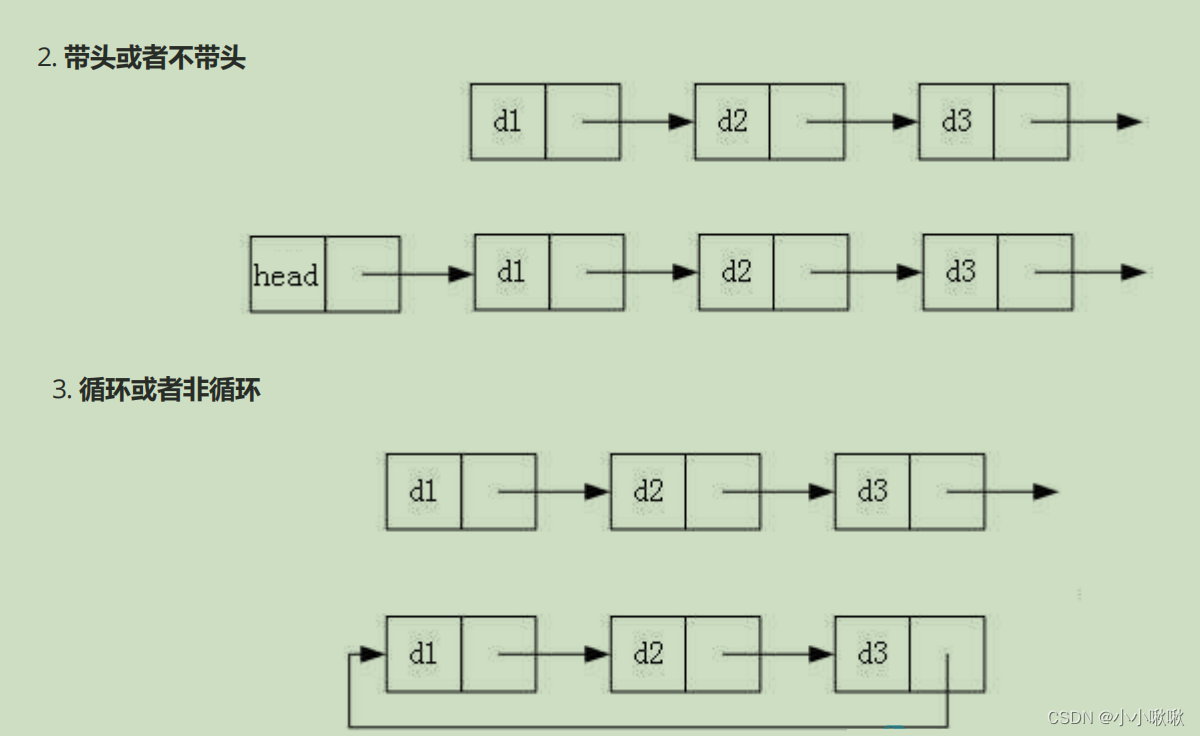
重点掌握下面两种:
无头单向非循环链表:结构简单,一般不会单独用来存数据。实际中更多是作为其他数据结构的子结构,如哈希桶、图的邻接表等等。另外这种结构在笔试面试中出现很多。
无头双向链表:在Java的集合框架库中LinkedList底层实现就是无头双向循环链表。
带头和不带头的区别
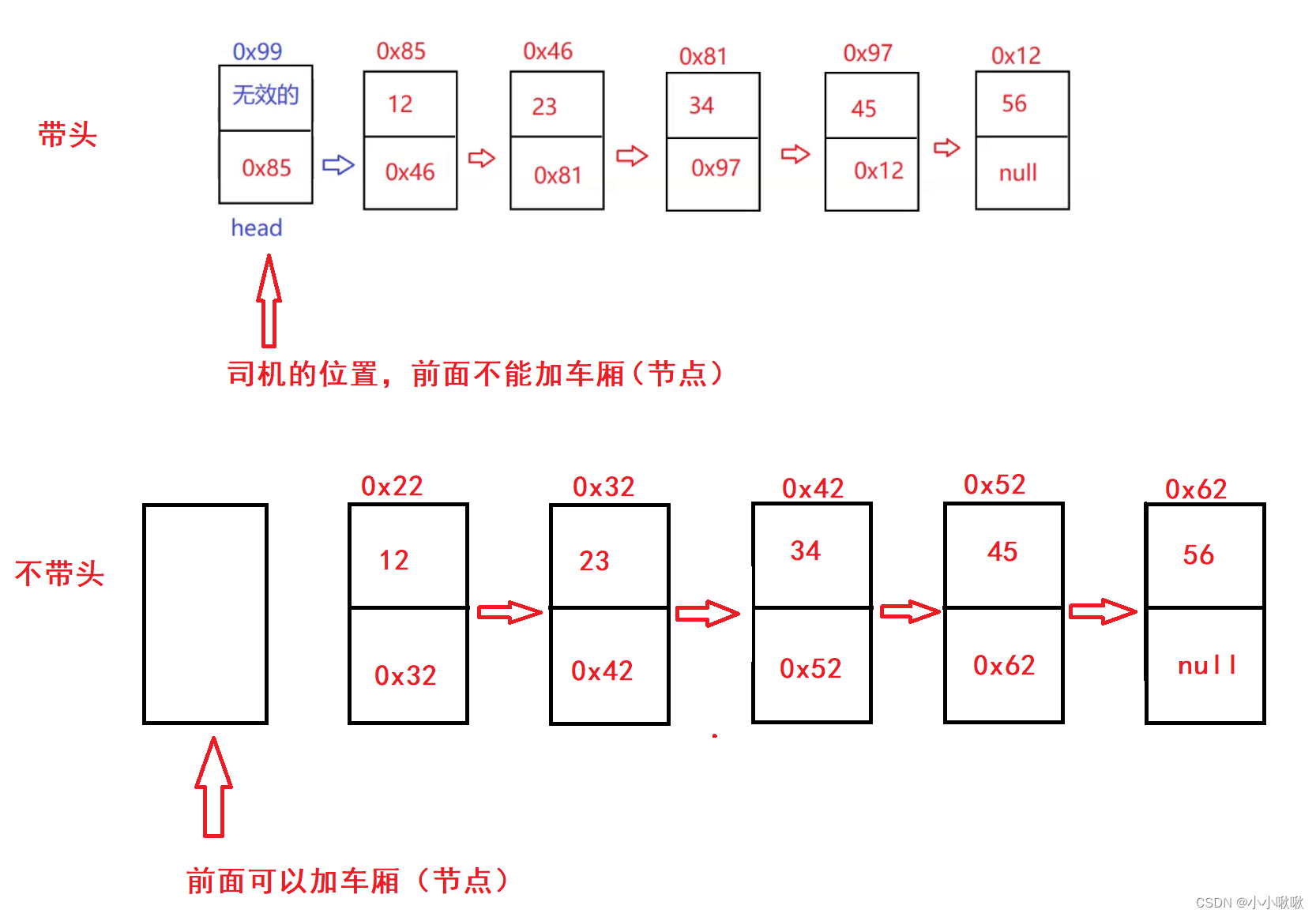
链表的实现(方法)
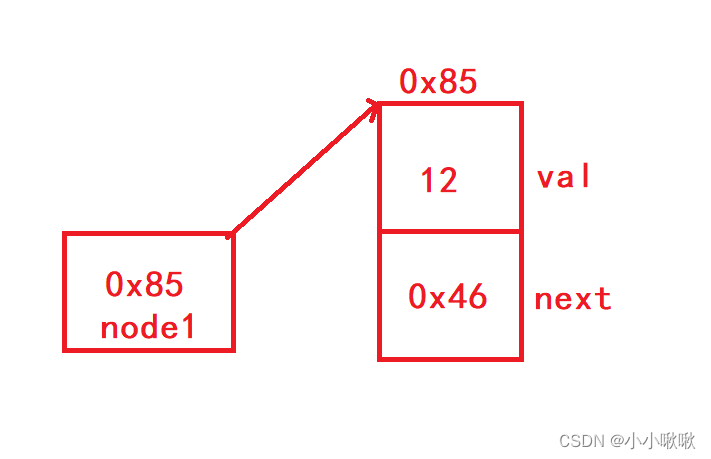
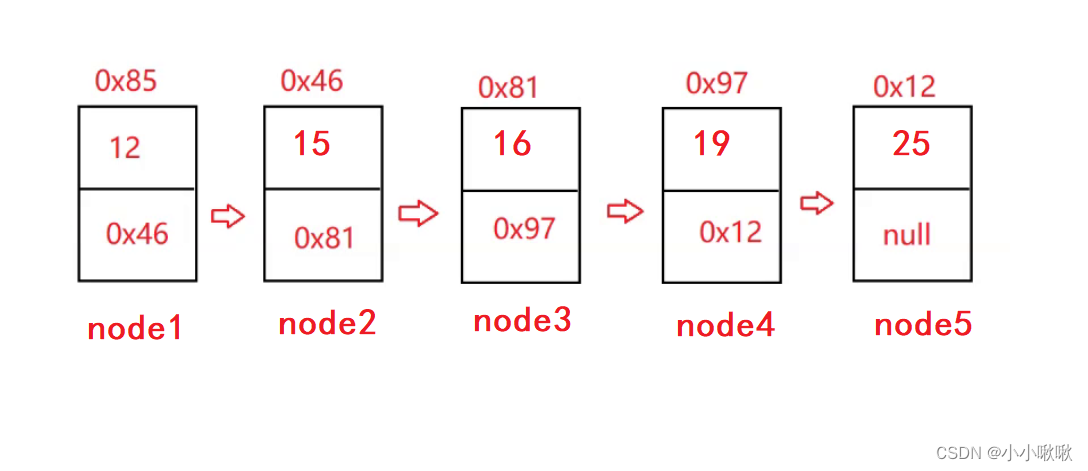
定义接口
public interface ILIst {
// 1、无头单向非循环链表实现
//头插法
void addFirst(int data);
//尾插法
void addLast(int data);
//任意位置插入,第一个数据节点为0号下标
void addIndex(int index,int data);
//查找是否包含关键字key是否在单链表当中
public boolean contains(int key);
//删除第一次出现关键字为key的节点
void remove(int key);
//删除所有值为key的节点
void removeAllKey(int key);
//得到单链表的长度
int size();
void clear();
void display();
}
遍历链表

1.怎么从一个节点走到下一个节点
head = head.next
2.怎么判断所有节点遍历完了
当head = null 循环结束
// while(head != null){
// System.out.print(head.val+" ");
// head = head.next;
// }
//这个方法遍历完head=null,会导致链表空了,找不到第一个节点在哪了
//所以应该把head赋值给一个数,让它去遍历,相当于head的分身,分身消失了,主体head还在
ListNode cur = this.head;
//进入循环条件为链表不为空
//也就是说当head为空时,循环结束
while(cur != null){
System.out.print(cur.val+" ");
cur =cur.next;
}
头插法
//头插法
//时间复杂度O(1)
@Override
public void addFirst(int data) {
//先实例化一个节点
ListNode node = new ListNode(data);
//如果链表没有节点,那么插入的这个节点就是第一个节点
//所以head = node
if (this.head ==null){
this.head = node;
}else {
node.next = this.head;
this.head = node;
}
}
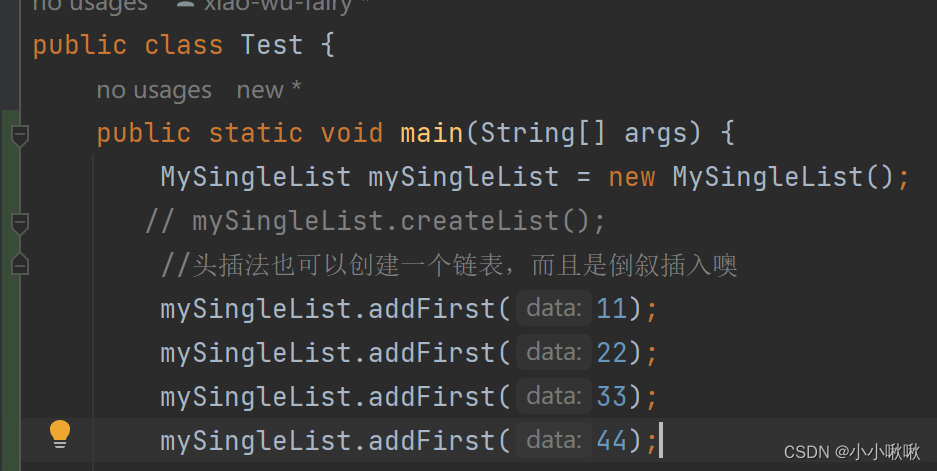
尾插法
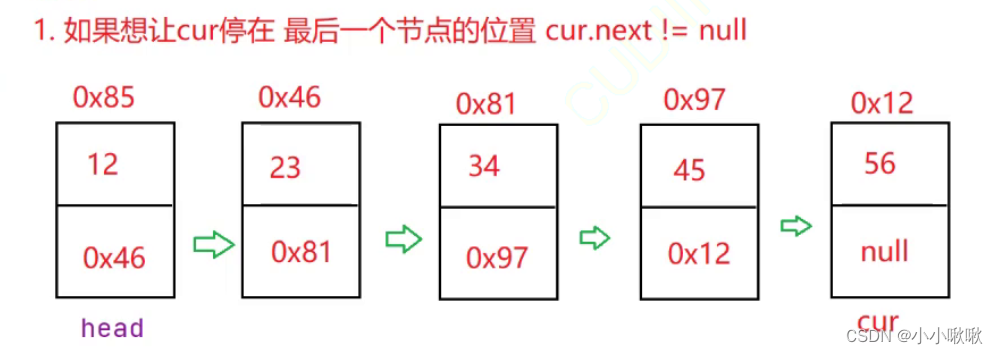
//尾插法:在最后创建一个节点
//时间复杂度O(N)
@Override
public void addLast(int data) {
//创建一个新节点
ListNode node = new ListNode(data);
ListNode cur = this.head;
//当链表为空时,此案件的新节点就是第一个节点
if (this.head == null){
this.head = node;
}else {
//让cur遍历完走到cur.next为空时,才找到了最后一个节点
//意思就是走出了while循环,就说明cur走到了最后一个节点上
while (cur.next != null){
cur = cur.next;
}
cur.next = node;
node.next =null;
}
}

任意位置插入一个节点
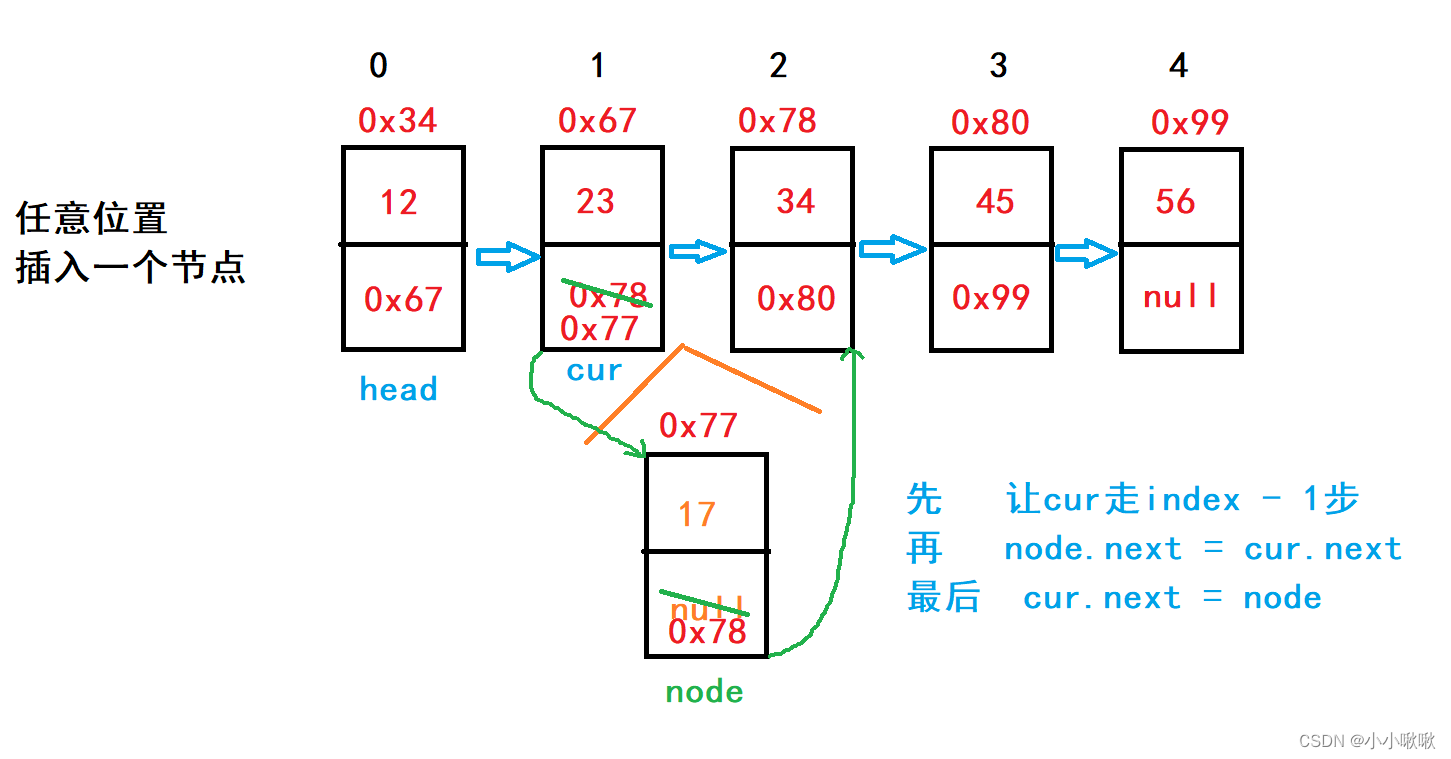
//让cur去到index-1位置
private ListNode searchPrev(int index){
ListNode cur = this.head;
int count =0;
while(count != index-1){
cur = cur.next;
count++;
}
//循环走完, cur已经走到index-1得位置了
return cur;
}
//任意位置插一个节点
@Override
public void addIndex(int index, int data) {
ListNode node = new ListNode(data);
//检查index得合法性
if (index < 0 || index > size()){
//抛自定义异常
return ;
}
//如果index=0 头插法
if (index == 0){
addFirst(data);
return;
}
//如果index=size,尾插法
if (index == size()){
addLast(data);
return;
}
ListNode cur = searchPrev(index);//调用cur走到index-1的方法
node.next = cur.next;
cur.next = node;
}
链表中是否包含某个数字
//链表是否包含某个数字
@Override
public boolean contains(int key) {
ListNode cur = this.head;
while(cur != null){
if (cur.val == key){
return true;
}
cur = cur.next;
}
return false;
}
@Override
public void remove(int key) {
}
删除链表某个节点
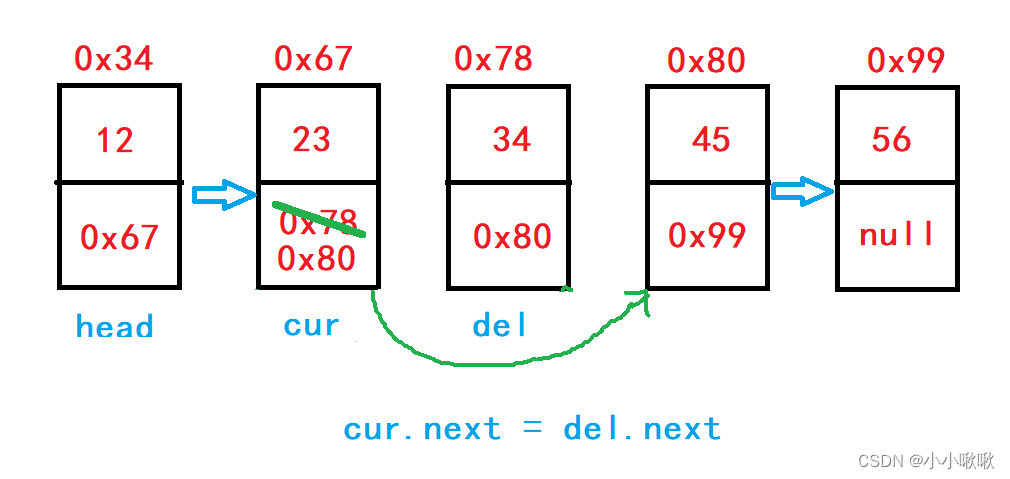
//让cur走到要删除的节点的前一个节点
private ListNode findPrev(int key){
ListNode cur = this.head;
//判断条件是cur不能超过倒数二个节点
while(cur.next != null ){
if (cur.next.val == key){
return cur;
}
cur = cur.next;
}
return null;
}
@Override
public void remove(int key) {
//如果链表为空,无法删除
if (this.head == null){
return ;
}
//如果要删除第一个节点
if (this.head.val ==key){
this.head = this.head.next;
return;
}
//判断前驱
ListNode cur = findPrev(key);
//判断返回值是否为空
if (cur == null){
System.out.println("没有你要删除的数字!");
return ;
}
//删除
ListNode del = cur.next;
cur.next = del.next;
}
删除链表中所有关键字key
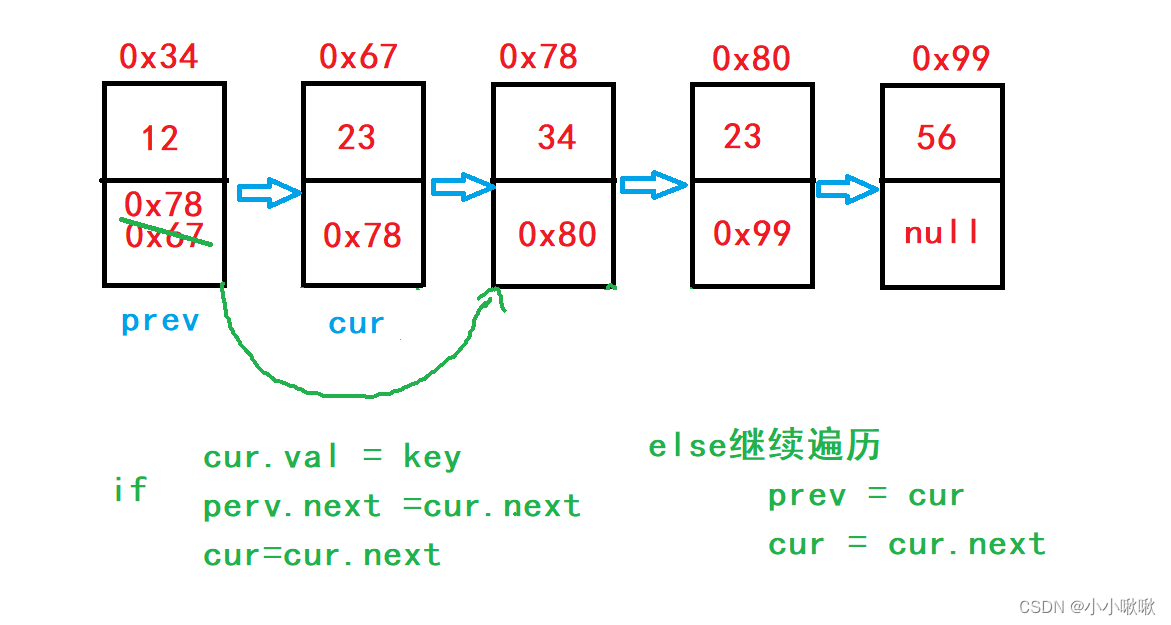
//删除链表中所有关键字key
@Override
public void removeAllKey(int key) {
if (this.head == null){
return;
}
ListNode prev = this.head;
ListNode cur = this.head.next;
while(cur != null){
if (cur.val == key){
prev.next = cur.next;
cur = cur.next;
}else{
prev = cur;
cur = cur.next;
}
}
if (this.head.val == key){
this.head = head.next;
}
}
清空链表所有节点
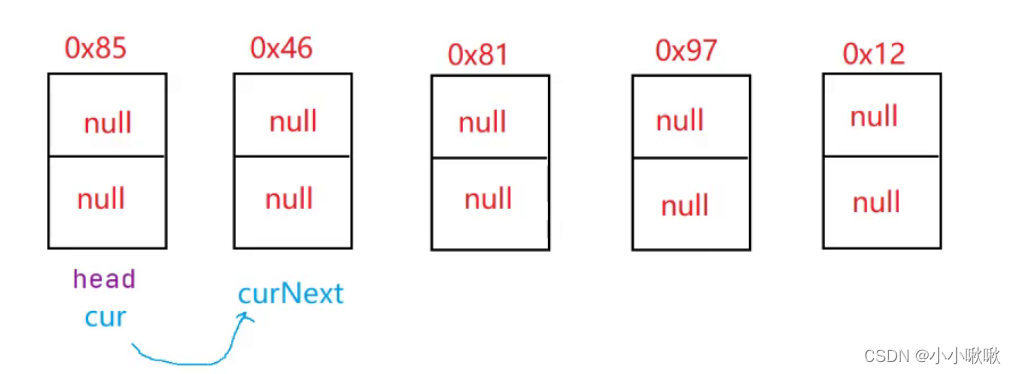
public void clear() {
ListNode cur = this.head;
while(cur != null){
ListNode curNext = cur.next;
cur.next =null;
cur = curNext;
}
this.head = null;
}
ArrayList 和 LinkedList的区别
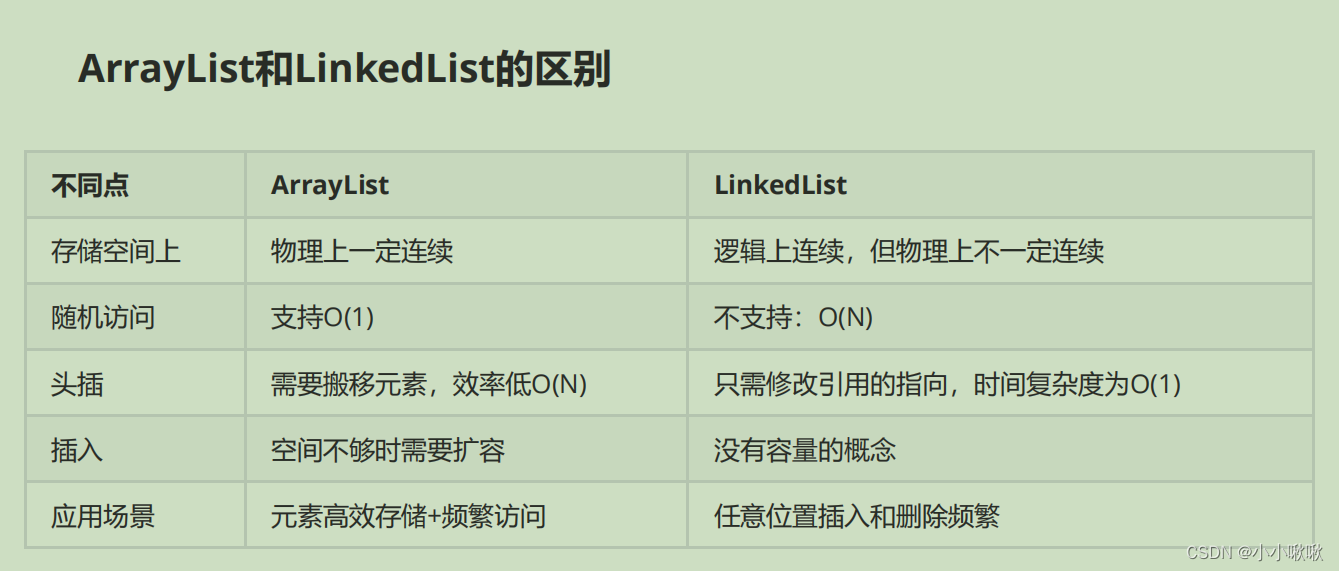
总结
以上就是关于链表的详细知识。
